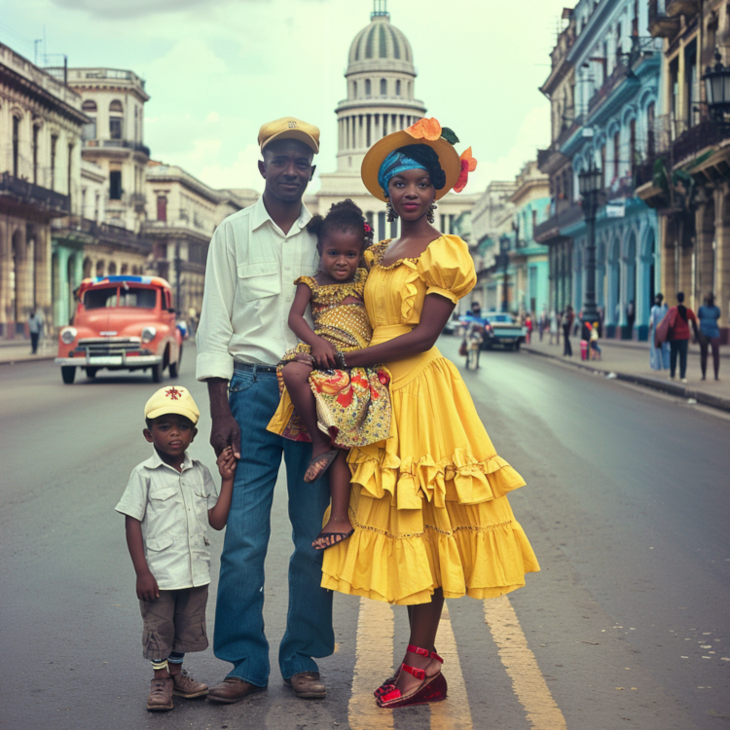About CU

Location
Cuba is an island country located in the Caribbean Sea, situated between the Caribbean Sea and the Gulf of Mexico. It is the largest island in the Caribbean and is located south of the United States and east of Mexico.
Capital
The capital city of Cuba is Havana, which is also the largest city in the country.
Population
Cuba has a population of approximately 11.3 million people, making it the most populous island nation in the Caribbean.
Language
The official language of Cuba is Spanish.
Religion
The predominant religion in Cuba is Christianity, with Roman Catholicism being the largest denomination. However, there is also a significant Afro-Cuban religious influence, including Santería and other syncretic faiths.
Geography
Cuba is known for its diverse geography, including rolling plains, mountains, and coastlines. The island is characterized by its lush vegetation, with tropical forests covering much of the interior. Cuba also has numerous beautiful beaches along its coastline, making it a popular tourist destination.
Economy
Cuba has a mixed economy with state-controlled sectors and limited private enterprise. Historically, the Cuban economy has been heavily dependent on agriculture, particularly the production of sugar, tobacco, and coffee. Tourism is also a significant source of revenue for the country.
Currency
The currency of Cuba is the Cuban Peso (CUP), although the Cuban Convertible Peso (CUC) was used for transactions with tourists until its phase-out in 2020.
Politics
Cuba is a socialist republic with a single-party system, where the Communist Party of Cuba holds significant political power. The President of Cuba is both the head of state and the head of government.
Culture
Cuba has a rich cultural heritage influenced by its African, Spanish, and indigenous Taíno roots. Cuban music, dance, and art are internationally renowned, with genres such as salsa, son, and mambo originating from the island. Cuban cuisine is also famous for its flavorful dishes, including rice and beans, roast pork, and plantains.

National Items of Cuba
Tocororo (Cuban Trogon)
The Tocororo (Priotelus temnurus) is the national bird of Cuba. Known for its colorful plumage, which reflects the colors of the Cuban flag, the Tocororo symbolizes the natural beauty and national pride of Cuba.
White Mariposa (Butterfly Jasmine)
The White Mariposa (Hedychium coronarium) is the national flower of Cuba. This fragrant white flower symbolizes purity, independence, and the struggles for freedom throughout Cuban history.
Royal Palm
The Royal Palm (Roystonea regia) is the national tree of Cuba. It symbolizes the resilience and strength of the Cuban people and is a common sight throughout the Cuban landscape.
Cuban Crocodile
The Cuban Crocodile (Crocodylus rhombifer) is an endemic species found only in Cuba. It represents the unique biodiversity of the island and the importance of wildlife conservation.
Cohiba Cigar
Cohiba cigars are world-famous and represent the rich tradition of cigar-making in Cuba. They symbolize the country's cultural heritage and expertise in tobacco cultivation.
Rumba
Rumba is a traditional Cuban music and dance style with African roots. It symbolizes the cultural fusion and vibrant spirit of the Cuban people.
Guayabera
The Guayabera is a traditional Cuban shirt, known for its comfort and distinctive style with vertical pleats. It represents Cuban fashion and cultural identity.
Mojito
The Mojito is a traditional Cuban cocktail made with rum, sugar, lime juice, soda water, and mint. It symbolizes the country's rich tradition of rum production and vibrant social culture.
El Capitolio
El Capitolio, located in Havana, is an iconic building that once housed the Cuban Congress. It symbolizes the architectural grandeur and historical significance of the nation's capital.
José Martí
José Martí is a national hero and an important figure in Cuban literature and the independence movement. His writings and legacy symbolize the country's struggles for freedom and national identity.

The national anthem of Cuba is called "La Bayamesa" in Spanish. Here are the lyrics in Spanish and their English translation:
¡Al combate, corred, bayameses,
Que la patria os contempla orgullosa!
No temáis una muerte gloriosa,
Que morir por la patria es vivir.
En cadenas vivir, es vivir
En afrenta y oprobio sumidos;
Del clarín escuchad el sonido,
¡A las armas valientes corred!
To battle, run, Bayamese,
For the homeland looks proudly upon you!
Do not fear a glorious death,
For to die for the homeland is to live.
To live in chains is to live
Submerged in disgrace and shame;
Listen to the sound of the bugle,
Run, brave ones, to arms!


